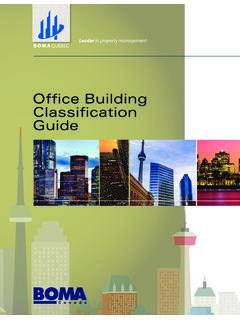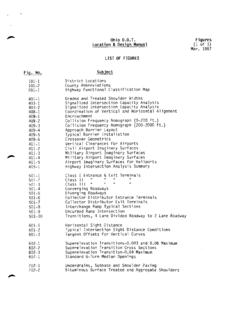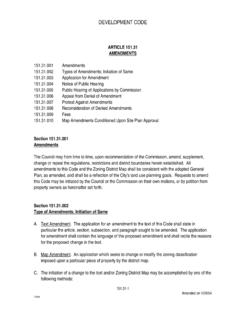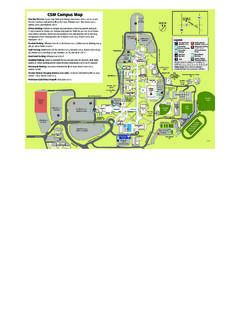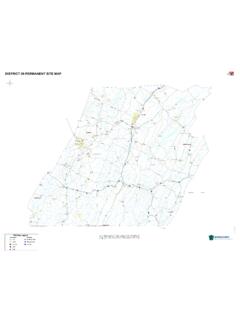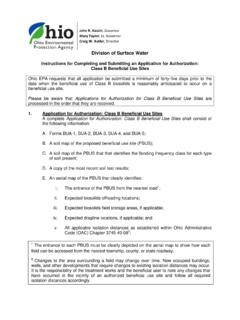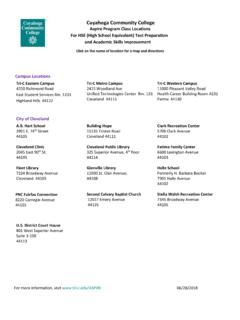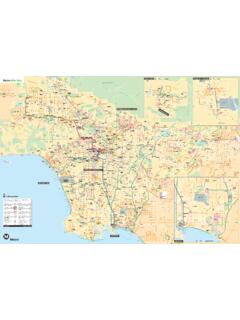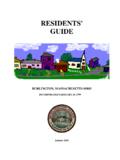Transcription of Office Building Classification Guide - BOMA Canada
1 Office Building Classification GuideLeader in property management2 Office Building Classification GuideIndex3 Project Approach 4 Introduction 5 A Guide for class A, B or C Office Buildings8 Conclusion 9 References Special thanks 10 SChedule A Support Grid For Office Building Classification 3 Office Building Classification GuideProject ApproachThe discussion on the need for clarification on Office Building Classification originated within the BOMA Quebec Property Management Committee. This committee s mission is to find new ways to improve BOMA s service offer to its members. Thus in the fall of 2012 a multidisciplinary working group composed of experts from various Quebec-based real estate firms was formed to study this issue in depth.
2 The working group included the following experts:Marie-France Benoit, AltusInSiteChristian Charbonneau, CBRES ylvain Leclair, Altus GroupLinda Plante, Ivanhoe CambridgeLinda Rigg, Oxford Properties GroupDominic Saucier, Avison YoungThe main objective of this task force of real estate owners, brokers and appraisers was to come up with an Office Building Classification framework that could eventually be published on the BOMA Qu bec website for the benefit of its following document describes in a very simple manner the committee s Building Classification GuideBuilding class definitions categorize Office buildings as class A, class B and class C. In many markets, class A can be subdivided into sub-categories such as Prestige, AAA, AA and A.
3 New categories have even started to emerge, such as class I (industrial converted to Office ). Commercial real estate agents, owners and managers determine the class of each Building . The groups consider several factors when determining the different evaluation criteria used to determine a Building s Classification allow the various actors in the commercial Office Building sector to share a common language and to identify market conditions per category, in an organized and readily comparable manner. Keep in mind that class definition is not a science, as there are no formal or international standards established. However, the ratings refer to Building specifics.
4 The inventory of Office space in a metropolitan market makes a distinction between class A, B, and C B and class C definitions are based on class A definitions. A Building s Classification is relative to other properties in a given market. Thus a class A Building in a small town will not share the same characteristics as a class A Building in the heart of Building Classification GuideWhat does a class A Building mean? What are the differences between class A, B and C buildings? When looking for new Office space, a tenant will quickly realize most buildings are classified in one of those three categories. The factors that determine a Building s class vary in each market, so a class A Office Building in a major urban city will be much different than a class A Office Building in a small rural town of 30,000 people.
5 There are no definitive formulas used to classify a Building , but a general definition for each class is provided in the Guide for class A, B or C Office Buildings6 Office Building Classification GuideClAss A Buildings: The most prestigious buildings with the most amenities in the best locations . They gene -rally are the most attractive buildings built with the highest quality materials and construction methods. Additionally, these buildings usually have a professional manager, good access, and are typically located in highly visible areas on high traffic streets. Due to their exceptional qua-lity, class A Buildings are usually leased to reputable tenants at the highest rental rates in the : High-rise Building in prime central bu-siness district .
6 A flagship Building in its market. Architecture - Concrete and steel construction, distinctive design, attrac-tive look, superior exterior finishes on the curtain wall, superior interior qua-lity finishes in main lobby and common areas, including elevators and was-hrooms. Fairly recent construction or very well maintained and/or recently renovated Building . Well designed and good-size layout to accommodate one or several tenants on the same floor. Strong identifiable location (well known address) - Convenient access (public transportation, etc.). Managed by a professional firm. Premier tenants. Highest rental rates. Strong market presence. State-of-the-art systems that meet in-dustry standards - automated mecha-nical, electrical and safety and security systems.
7 High capacity back-up power system. Elevators - Sufficient number of elevators for the number of floors and Building po-pulation. Environmental - Certification (BOMA BESt, LEED). Responsable sustainability practices in place. Security 24/7 controlled access system, camera monitored. For smaller buildings or those located in a outlying areas, ac-cess control system in place as well as alarm system with off-site monitoring. Built by reputable developer and contrac-tor. Parking - Sufficient private and public parking to accommodate tenants and visitors. 24/7 access for Building tenants with security controls in place.
8 Bike stands and electric vehicle charging sta-tions have become the norm. Tenant services Experienced and pro-fessional manager providing centralized tenant service call system, including maximum response time, concierge ser-vices, tenant relationship program, regu-lar tenant activities such as barbecues and holiday breakfasts, new tenant wel-come committee, etc. Amenities Enclosed weather protected walkway connection, conference centre, fitness centre, service oriented retail such as convenience store, cafeteria/food court type restaurants, dry cleaning services, ATM and Wi-Fi. For stand-alone buildings not located downtown, cafe -teria/food court restaurants and coffee shops provide above-average services to Building Classification GuideClAss B Buildings: These buildings are a grade below class A.
9 Generally, they are slightly older buildings with good management and quality tenants. It is not uncommon for value-added investors to target these buildings with the intention of renovating them back into class A buildings. class B buildings are well maintained overall and quite functional. class B Office buildings commonly have an acceptable curtain wall finish, adequate (but not state of the art) mechanical, electrical and safety and security systems, and a mid-quality level of interior finish. class B buildings compete for a wide range of users at average rental rates for their market : A grade below class A.
10 Slightly older buildings Good management, quality tenants. Building finishes Fair to good. Good quality systems Not at class A level. Can be targeted by investors planning renovations to restore them to class A. Well maintained Functional. Average rental C Buildings: This is the lowest grade for useable Office buildings. These Office buildings are gene -rally older and may be located on less desi-rable streets in older sections of the city, for example. Many of these buildings usually have higher than average vacancy rates for their market. Older, less desirable architec -ture, limited infrastructure and antiquated technology define these buildings.
